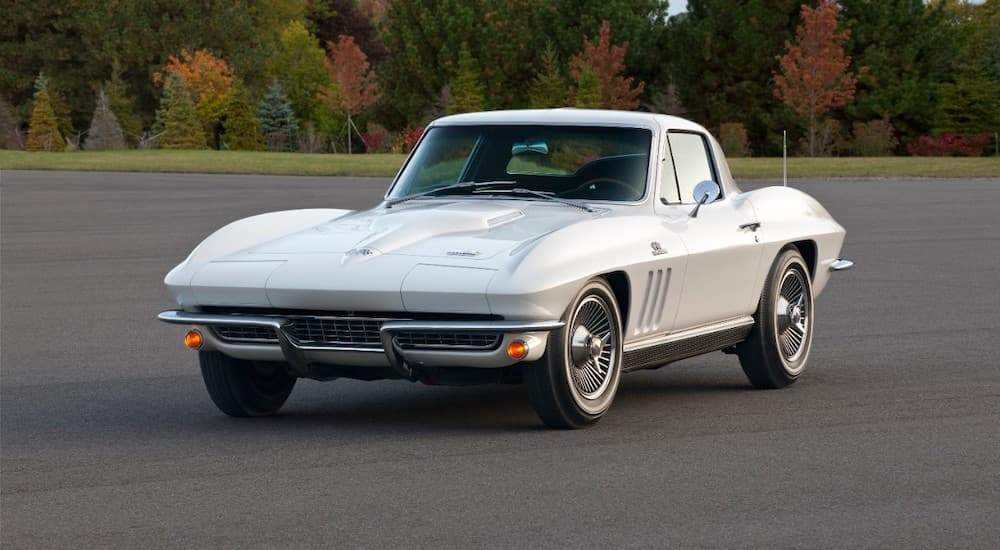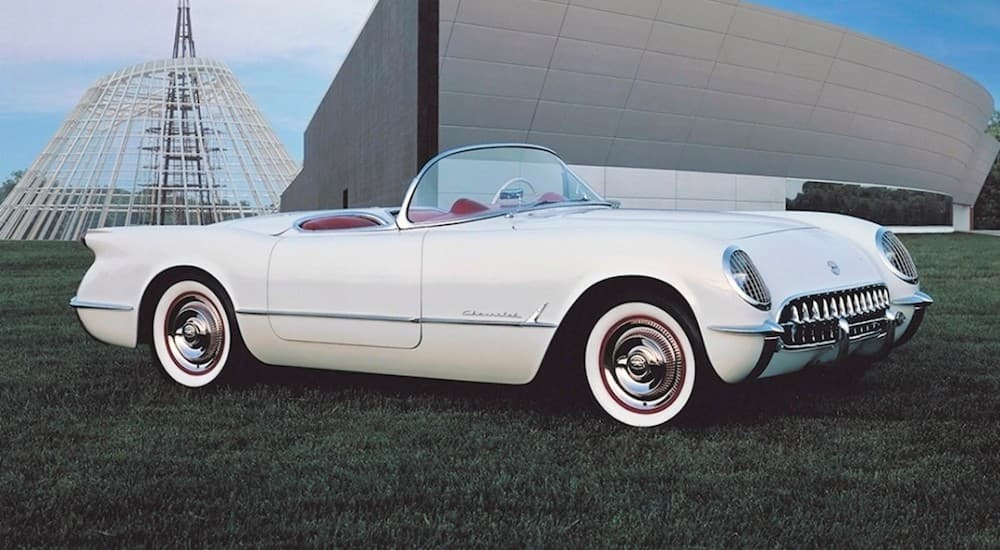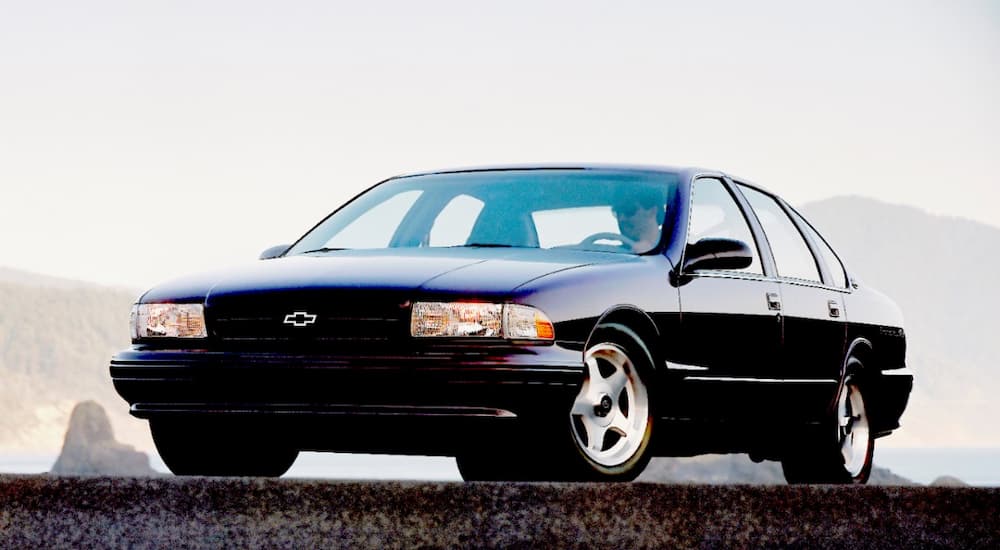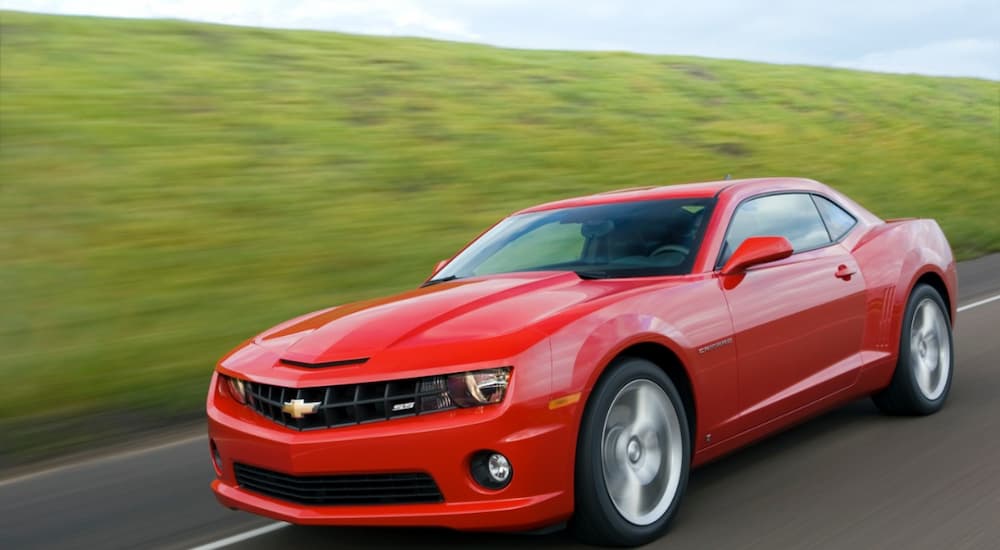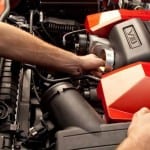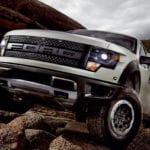Shopping at your local used Chevy dealer is an exciting task, especially when you appreciate everything Chevrolet has to offer and how the iconic automaker revolutionized the American automotive landscape. This revolution started in the early 1900s when racecar driver Louis Chevrolet and businessman William C. Durant, the founder of General Motors, teamed up to bring their vision to life. They wanted to build top-performin–g automobiles that were not only capable but affordable for everyone. The Chevrolet Motor Car Company was born and, alongside it, the makings of an engine that would change American transportation forever.
Powering America: The Road to the Small-Block V8
When you look at the American automotive industry, there’s no question that Chevy’s small-block V8 engine spurred fierce competition and widespread innovation among top automakers after its introduction in 1955. However, the small-block V8 engine that defined America wasn’t entirely new to the Chevy lineup in the 1950s. Chevy’s first small-block engine came in 1917.
Chevy introduced the small-block V8 on its 1917 Series D, equipping 3,000 models with the engine and the promise to deliver unfailing power. This power, however, was far less than what the four-cylinder engine delivered on the Series FA Chevy, which was also cheaper. The Series D V8 was soon discontinued.
Although Chevy’s first Series D V8 failed to impress, Chevy’s persistence and commitment to the revolutionary idea ultimately paid off thanks to an engineer named Ed Cole. Cole tasked his team with designing a lightweight V8 engine that was practical, powerful, affordable to build, and had the potential for growth with the Chevy lineup. After several failed attempts, Cole struck gold when a member of his team, an engineer named Don McPherson, showed him a rough sketch of an engine. Knowing the design would work, Cole oversaw the engine’s build, finetuning it with components and inspiration taken from GM’s many divisions. By 1955, the small-block V8 engine was born.
265 Turbo-Fire V8
Chevy officially debuted its small-block 265 Turbo-Fire V8 engine on the 1955 Bel Air and Corvette, the latter of which churned out 195 horsepower with the new engine. Another round of improvements to the engine in 1956 took this power even higher as the Corvette introduced three versions of the powertrain, with the most powerful delivering 240 horses. Cole’s vision for a practical, affordable, and powerful engine was finally fulfilled.
Affectionately known as the “Mighty Mouse,” the engine was easy and affordable to modify in-house, which is exactly what Chevy did throughout the 1950s with the 283, 327, 350, and 400 V8s. Parts were interchangeable, and the engine’s small size meant it could be configured for a variety of Chevys, which meant more drivers would benefit from Chevy’s latest innovation. As time passed, the Mighty Mouse proved its reliability, and this spurred an even bigger frenzy in the industry as automakers hurriedly worked to design a comparable engine for their own fleets. Nothing, however, could compete, and before long, drivers were equipping non-Chevy vehicles with the Chevy small-block, which speaks volumes to the engine’s design and capability.
The Chevy Camaro + 302 V8 and 350 V8
Shortly after Ford introduced the Mustang, Chevy entered the segment with the Camaro. Along with this came the introduction of the 302 engine, which readied the Camaro for the SCCA Trans-Am competition that limited engines to 305 cubic inches. Chevy combined the 327 V8 with the 283 V8 to create the 302 racing engine. Camaro buyers responded in kind by opting for the Z/28 package that delivered 290 horsepower and 290 lb-ft of torque for exceptional speed and nimble handling.
Following the success of the 302, Chevy introduced the 350 V8 engine as an option for the 1967 Camaro. The 350 quickly became a staple in Chevy’s powertrain lineup and was an option on everything from Chevy’s best-selling trucks to its efficient sedans. Its popularity was well-earned with its wide range of power that delivered upwards of 370 ponies on models like the Corvette ZR-1 and the Camaro Z28.
Gen II LT1
Just as Chevy introduced its revolutionary small-block V8 on the original Corvette, it debuted the engine’s second-generation (known as the LT1) on the 1992 Corvette. The engine shared many similarities with its predecessor but came equipped with a new cooling system, water pump, pulley system, and intake manifold. Other components like the mounts and belt housing bolt pattern were the same and gave drivers the option to put the new engine in older Chevys. Once again, Cole’s vision of a versatile small-block V8 engine was front and center.
The LT1 engine quickly proved its capability on the 1992 Corvette that delivered 300 horsepower and 330 lb-ft of torque in its debut year. It was also offered on the Camaro, Firebird, and the Impala SS, the latter of which was full of surprises in 1994 when the sedan churned out 260 horses and 330 lb-ft of torque. Despite this, however, the LT1 was short-lived as Chevy quickly got to work on the Gen III, otherwise known as the LS family of small-block V8s.
Gen III LS1 and LS6
While the first and second-generation small-block engines had a lot in common, Chevy completely redesigned the engine for the third generation. The engine featured redesigned heads that delivered more power and airflow, as well as a new cam, intake, and coil-near-plug ignition. These features worked together to deliver even more power than ever on the 1996 Corvette, which churned out 345 horses and 350 lb-ft of torque.
Chevy knew the LS1 hadn’t been pushed to its limits and made a few tweaks to the engine by increasing the size of its camshaft, giving it a higher compression ratio, and redesigning the intake manifold. These changes resulted in the LS6 engine, a performance-focused beast that made its way to the Corvette Z06. The Corvette roared to life as the engine delivered 405 horsepower and 400 lb-ft of torque, pushing the Corvette to a new level of capability.
Gen IV and Gen V
With ongoing advancements in technology and engine design, Chevy introduced newer versions of its iconic small-block engine. In 2005, the LS7 debuted at 427 cubic inches (the largest small-block ever made) and implemented new technology like variable valve timing. This translated to even more power, with the LS7 churning out 505 horses and 470 lb-ft of torque, the most horsepower in both Chevy and GM history.
Further improvements to the engine led to the LS3, which was introduced on the 2008 Corvette and was later added to the Camaro SS and Chevrolet SS lineups in 2010. During this time, Chevy also added the supercharged 6.2-liter LS9 engine to the Corvette ZR1. A true highlight in Chevy’s small-block history, the LS9 took the title as the most powerful of any small-block engine ever made when it churned out 638 horses on the Corvette.
As time would tell, the LS9 would later lose its title to the fifth-generation small-block engine known as the LT5. Debuting on the C7 Corvette, the LT5 is the ultimate performer with its stronger crankshaft, larger supercharger, and new oiling system. Don’t believe us? It can crank out 755 ponies in the blink of an eye.
The Small-Block Legacy Continues
Chevy doesn’t believe in the saying that “all good things must come to an end.” That’s apparent in the progression of its revolutionary small-block engine over the last five generations. With each new generation, the small-block becomes more ingrained in the American automotive landscape, proving that it continues to get better and more powerful with age. This gives buyers looking for a used Chevrolet even more encouragement as the new generation of engines picks up where the original small-block left off, delivering more power and capability than Louis Chevrolet and William Durant ever imagined over a century ago.
